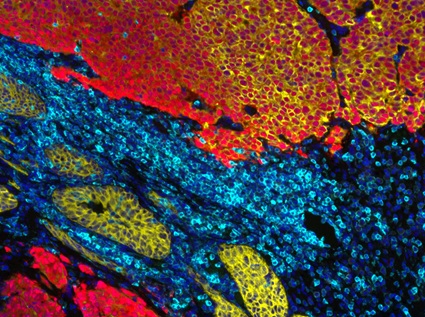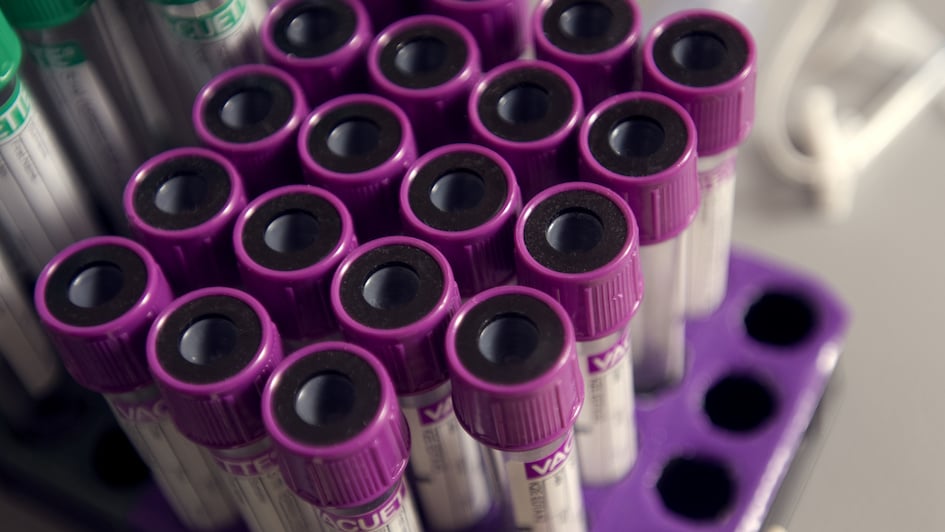Identifying cancer predisposition genes
We have led the world in identifying cancer predisposition genes and establishing their clinical impacts.
485x364.jpg?sfvrsn=38a9d0b9_2)
We have discovered genes for a variety of cancers including breast cancer, ovarian cancer, childhood cancers and renal cancer have and put these discoveries into the clinic to improve cancer treatment and cancer prevention.
It has been known for many decades that unusual clustering of cancer in families can sometimes occur.
By the 1990s, advances in molecular research made it possible to track the genes these families which in turn led to the discovery of the underlying genetic causes.
Harnessing gene tracking
Scientists at The Institute of Cancer Research, London were among the leaders in harnessing the powerful new methods for gene tracking to discover which inherited genetic mutations increase the risk of cancer.
In 1994, by studying families with unusually high numbers of breast cancers, we pinpointed that mutations in a new gene, which we called, BRCA2, can cause breast and ovarian cancer. Women with a BRCA2 mutation are at substantially increased risk of breast and ovarian cancer.
This discovery laid the groundwork for developing novel forms of therapy for BRCA-associated cancers. It has also directly helped tens of thousands of families across the globe to get better information about their cancer risk and options for cancer surveillance and cancer prevention.
Further innovation
We’ve since continued to innovate and hone methods for finding the genes that make developing cancer much more likely, combining state-of-the-art technology with exceptional clinical understanding of familial cancer.
We have discovered gene mutations that lead to the development of breast, ovarian and kidney cancers, as well as devastating childhood cancers.
In 2001, Professor Nazneen Rahman and Professor Mike Stratton embarked on an innovative strategy to discover genes similar to BRCA1 and BRCA2 that are involved in cancer predisposition because of their role in repairing damaged DNA.
Through studies that were amongst the largest of their kind, we identified several genes involved in breast and/or ovarian cancer predisposition such as CHEK2, BRIP1, ATM, PALB2, RAD51C and RAD51D. Genetic testing for these genes is becoming increasingly routine across the NHS and beyond.
A leader in childhood cancer studies
Our researchers have also focused attention on childhood cancers.
We lead the largest inherited childhood cancer study in the world. By studying rare childhood cancer syndromes, combined with large-scale follow studies we have found several genes involved in causing childhood cancer.
Some genes, such as PALB2, cause childhood cancers if a person has mutations that stop both copies of the gene working, and adult cancer if only one copy of the gene malfunctions.
Findings like these can be used by doctors to help predict who is at increased risk of developing cancer and would benefit from cancer surveillance or cancer prevention strategies. Equally importantly it allows people within the family who haven’t inherited the cancer causing mutation to be spared these interventions. This type of information is a key part of individualising care and delivering personalised medicine.
We are committed to ensuring that our discoveries make a difference to cancer patients and people at increased risk of getting cancer. Through innovative translational studies with our partner The Royal Marsden NHS Foundation Trust and many hospitals across the world we are now working to make genetic testing for cancer predisposition genes available to everyone that could benefit.
Related news
Related blogs
Ovarian cancer continues to claim thousands of lives in the UK each year, despite being relatively treatable if it’s caught early. However, an innovative laboratory test – the liquid biopsy – could identify cancer cells before a tumour forms, transforming diagnosis and treatment and bringing new hope for patients. Isy Godfrey spoke with Dr Isaac Garcia-Murillas, who is leading research into this new diagnostic technique, to find out more.

